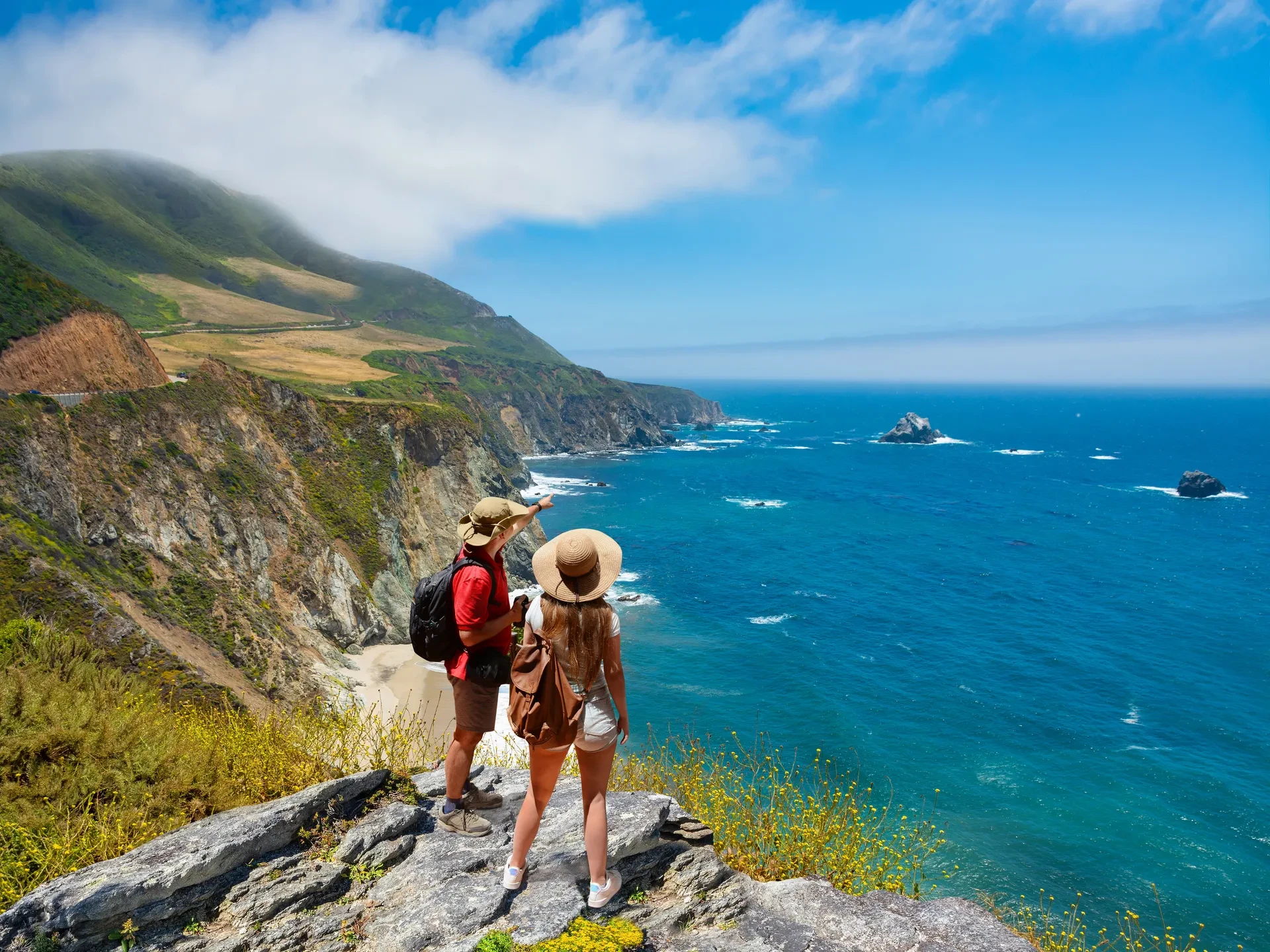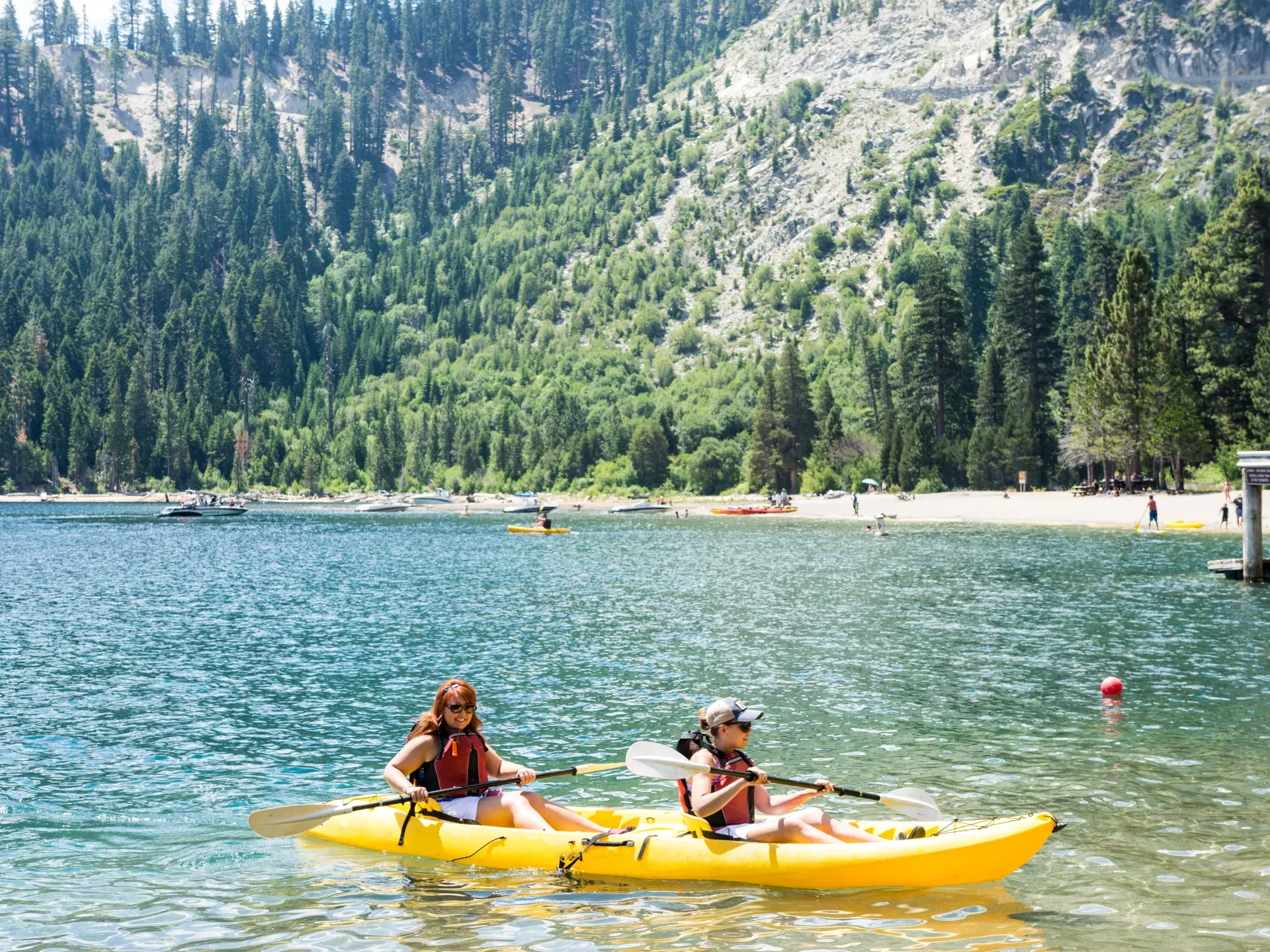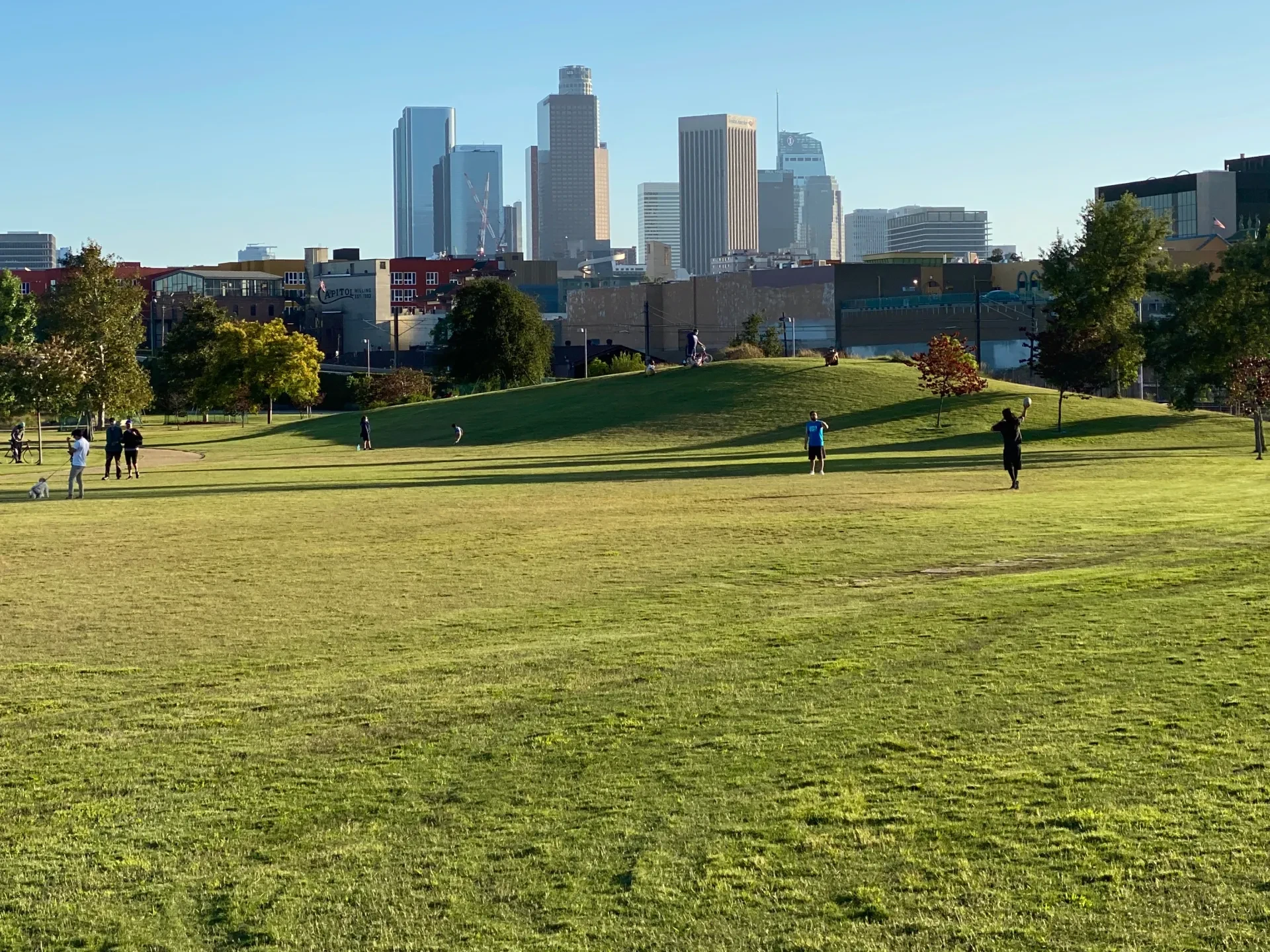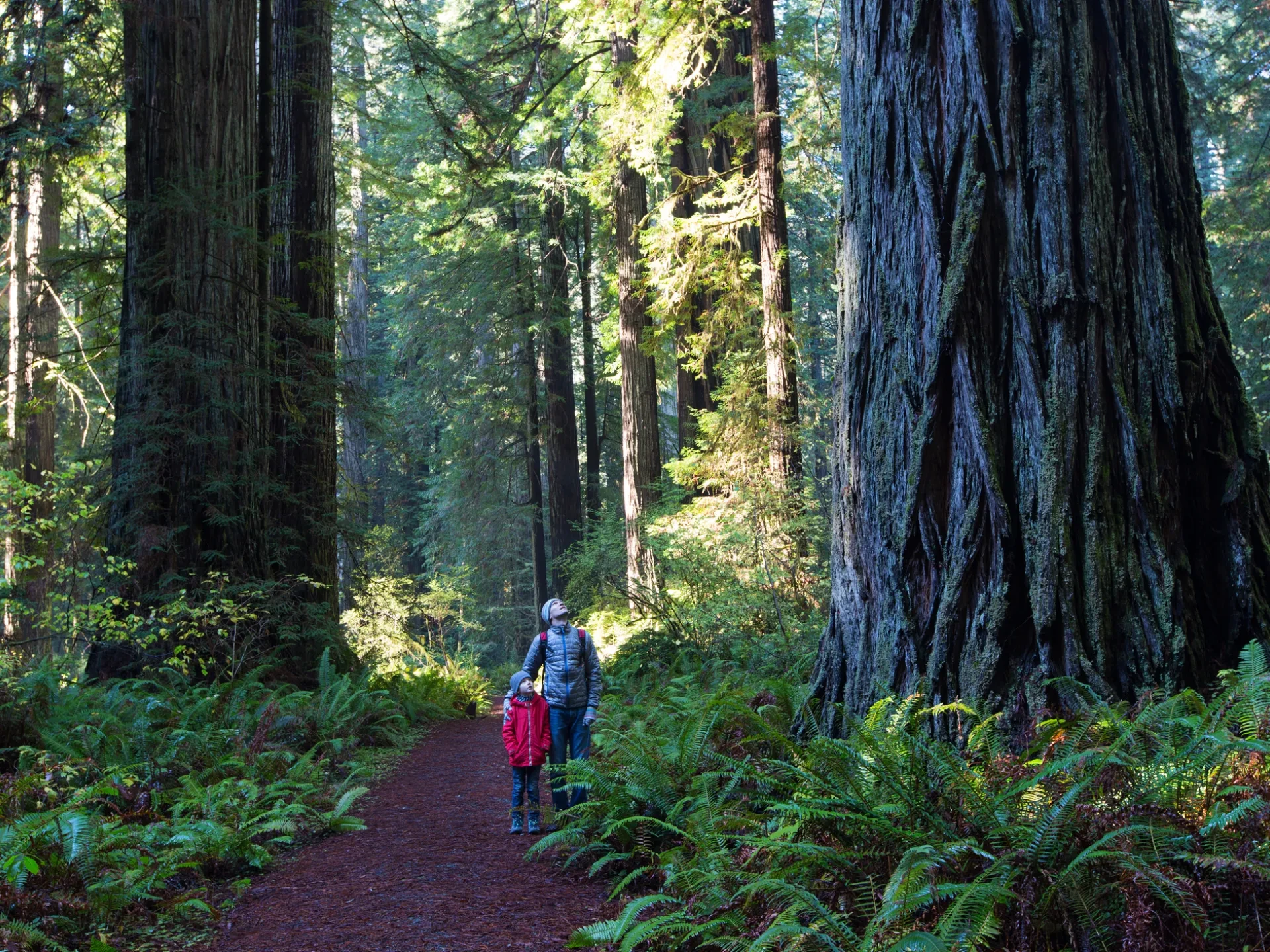California has the largest and most biologically diverse state park system in the nation. In the 280 park units across the state, one can visit beaches, lighthouses, ghost towns, mountains, deserts, and more. These parks offer amazing recreation opportunities year-round, but summer remains the state’s most iconic season in many hearts and minds. However, summer brings challenges in the form of extreme heat waves, drought, and wildfires that impact quality of life across the state. California state parks remain important for their ability to provide world-class recreation opportunities to beat the heat and to preserve and protect these lands and the biodiversity they contain.
Feeling the summer sizzle and looking to stay cool? Here are some thought starters to help you choose your next summertime state park adventure:
Want a classic Californian day? Feel the breeze on a beach
California state parks protect almost one-quarter of the state’s coastline, boasting sites ranging from pristine beaches to tidepools and coastal bluffs. These parks provide opportunities to swim or wade, or simply feel the wind on your face. When searching for a great coastal park, remember that they may go by many names. Parks like Leo Carillo State Park and Tomales Bay State Park aren’t designated as state beaches, but they still offer the cooling factor of the coast. As a bonus, parks offer more than just a great beach day. Coastal parks offer opportunities to watch wildlife like migrating marine mammals (like elephant seals at Año Nuevo State Park) or birds and to hike along bluffs or dunes in places like Torrey Pines State Natural Reserve and State Beach when it is simply too hot to exercise outdoors in other parts of the state.
-
Planning for the perfect beach day? You’re not alone — these are often some of the most visited parks in the heat of summer. Consider heading out early in the day or during the week to avoid crowds. Brush up on ocean safety guidance and bring plenty of water and sunscreen with you.
-
Planning for the future: Sea level rise poses a major threat to these parks. Learn how California State Parks Foundation is protecting and preserving these parks and how you can get involved.
Take a dip in a river, reservoir, or lake
The Pacific Ocean isn’t the only body of water cooling Californians off every summer. California state parks also contain over 970 miles of lake and river frontage throughout the state, including many miles of the California shore of Lake Tahoe (the largest alpine lake in North America) in parks such as Ed Z’berg Sugar Pine Point State Park as well as lesser-known but just as special places like Castaic Lake SRA. Many California rivers, including the Stanislaus River that runs through Caswell Memorial State Park, start as snowpack high in the Sierra Nevada Mountains, which means that river water temperatures remain cold throughout the hottest months. You might have seen California state parks take a starring role on social media, with bucket-list level swimming holes like the Big Sur River Gorge found in Pfieffer Big Sur State Park. Please be mindful that rivers and lakes are not always safe to swim in or boat on, so always check with the park you are visiting to understand current conditions and take necessary safety precautions.
Lakes and rivers offer opportunities to swim, boat, fish, picnic, birdwatch, and relax on the shore. Like coastal parks, climate change is affecting these environments as well. Reduced snowpack and drought can lower water levels in lakes, rivers, and reservoirs which would reduce opportunities for summertime recreation in dry years.
-
Planning a luxurious lake visit? Follow general safety guidelines, as well as specific guidelines for activities such as boating.
-
Planning for the future: Use your voice to support state parks and ensure that all Californians can access these incredible places. Learn more about how you can take action through advocacy.
Short on time? Visit an urban park
State parks may be closer than you think — every major metropolitan area in California boasts an urban park, which is a park found within a city. Urban parks take many shapes and forms. The first type of urban park to come to mind might be a grassy green lawn or gathering area with a playground and picnic benches, but California state parks offers diversity of parklands even within cities. For example, Topanga State Park is entirely within Los Angeles’s city limits and is considered the world’s largest wildland within the boundaries of a major city.
Urban parks do more than provide recreation opportunities — they actually help keep our cities cooler than they would be without green space. Trees and bushes provide shade for humans and animals alike to provide immediate relief from the sun, and they store carbon dioxide to help mitigate climate change in the long term. However, urban parks, like all parks, are threatened by the impacts of climate change. Candlestick Point State Recreation Area, the first urban park in California, experienced major flooding that made it hard to access the park until the community advocated for a solution that has since made the park safer for pedestrians and bikers to access.
-
Planning a trip to an urban park? Follow general safety guidelines as urban parks can be hot even if they’re cooler than the surrounding built environment. A benefit of urban parks is how easy they can be to get to — consider taking public transit or carpooling where possible.
-
Planning for the future: Opportunities abound to support these parks. If you’d like to spend time volunteering (to make an impact like volunteers have at Rio De Los Angeles State Recreation Area for example), find available opportunities here.
Find shade in a redwood forest
There’s a reason Hollywood uses redwood forests as the setting for fantasy lands and prehistoric worlds — these forests offer impressive real-world impact to stay cool on a hot day. Redwoods need fog to thrive, as it protects them from the heat and offers the consistent water source they need to reach the heights of the tallest trees on earth. If you've ever been inside a redwood forest, you know that the combination of dense shade and fog keeps temperatures cool even on warm days. Redwoods can be found in 49 state parks from the Oregon border to the southern end of Big Sur and provide a range of recreational opportunities in the summer. A redwood hike doesn’t need to be long to be rewarding — accessible trails provide an excellent vista of these trees.
Long term, redwood forests are critical pieces of the state’s climate-resilient future. Compared to other trees, redwoods actually store more carbon dioxide and keep that carbon out of the atmosphere for longer. However, climate change and warming temperatures reduce the number of foggy days, prolong drought conditions, and increase the likelihood of severe wildfires (such as the CZU complex fire that burned most of Big Basin Redwoods State Park, which can reduce the lifespan of these beloved trees.
-
Planning to relax in the redwoods? Review hiking safety tips to prepare for any length of journey.
-
Planning for the future: Learn how California State Parks Foundation is funding climate-smart land and park stewardship to make state parks more wildfireresilient and how you can get involved.
How will you stay cool this summer? Follow our social media accounts (@calparks on Instagram, Facebook, X/Twitter, and YouTube) and share how you spend your summer!
To learn more about how climate change affects state parks and how we can collectively take action, check out our trailblazing report, Building a Climate-Resilient California State Park System: Preserving Parks for Future Generations.



